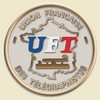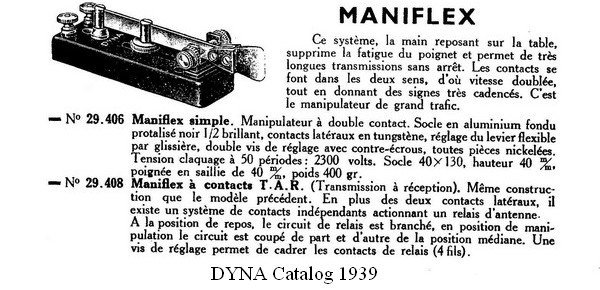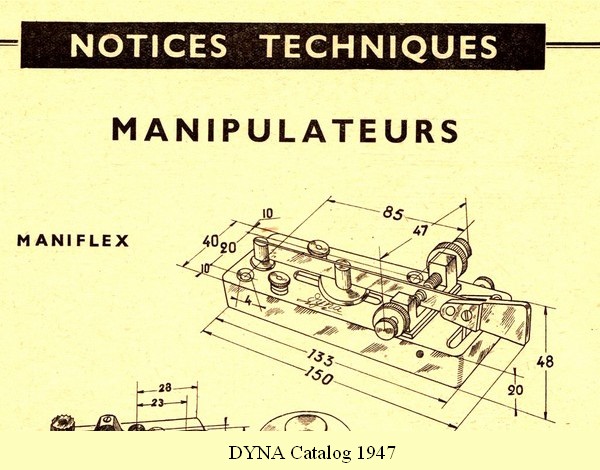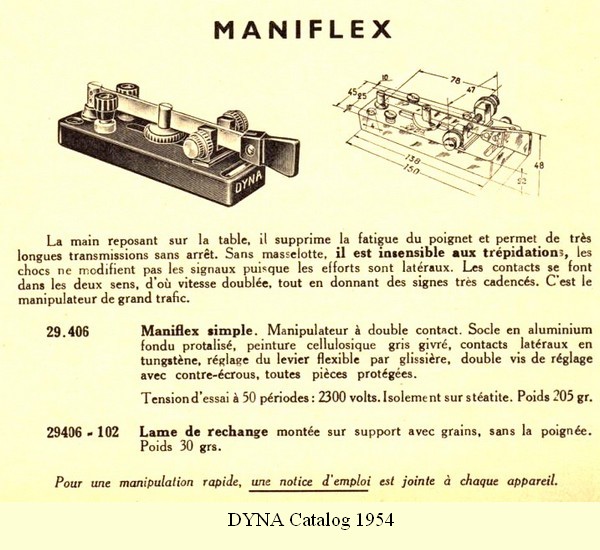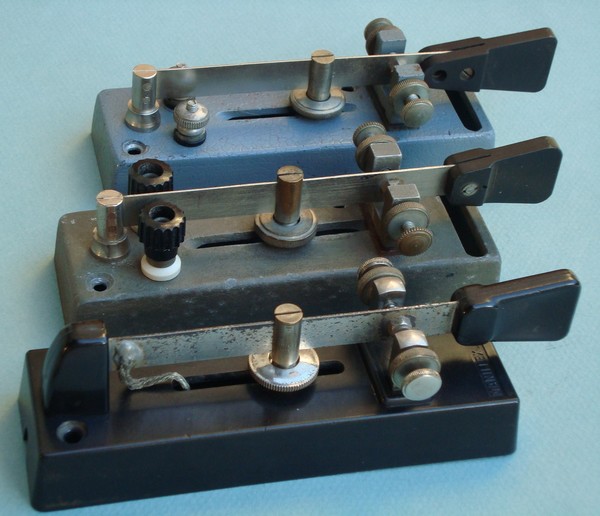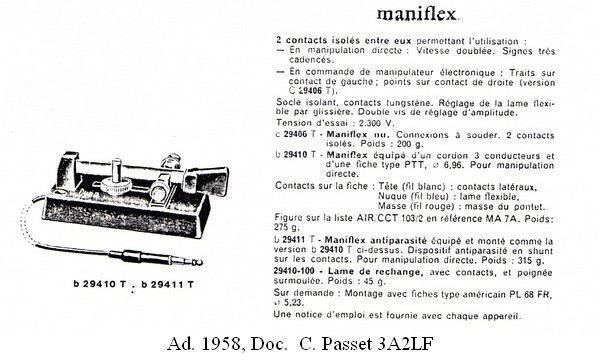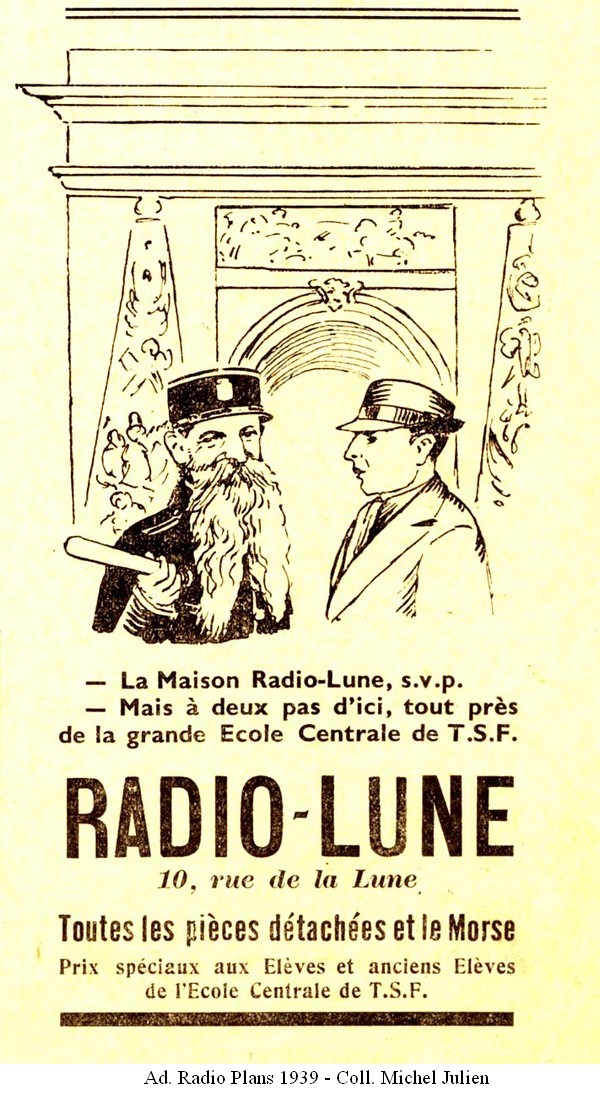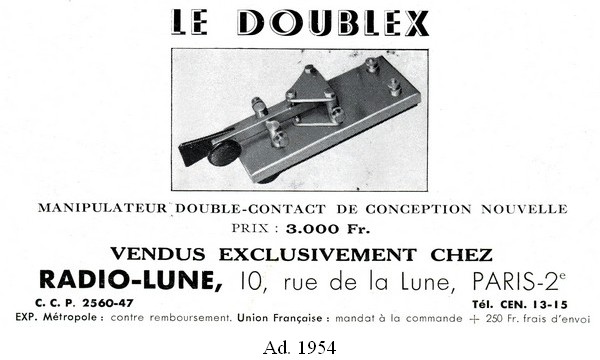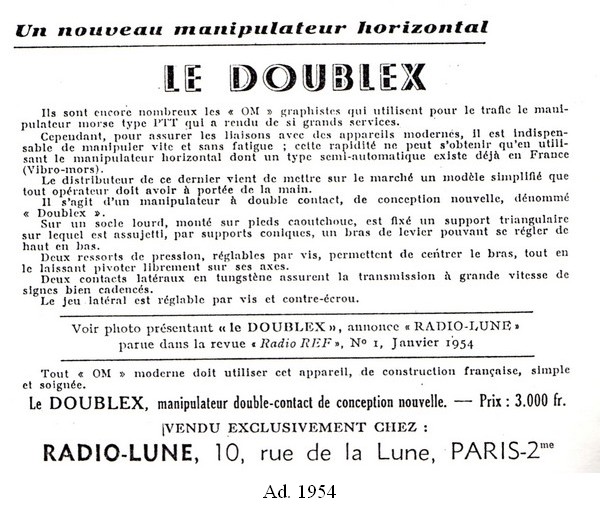French Double Contact Keys.
By Christian CHEFNAY, F9WT.
Translation and adaptation of the original article by F5LAW & G0JWB.
Introduction.
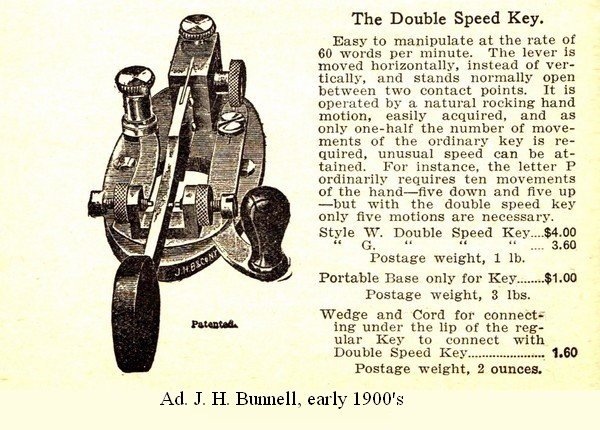 The first double contact key, or Sideswiper key, was introduced in the USA by J. H. Bunnell in the early 1900's under the name "Double Speed Key". This key permitted landline telegraph operators to send telegrams faster and for longer periods of time without fatigue or cramp.
The first double contact key, or Sideswiper key, was introduced in the USA by J. H. Bunnell in the early 1900's under the name "Double Speed Key". This key permitted landline telegraph operators to send telegrams faster and for longer periods of time without fatigue or cramp.
This key was partially supplanted by the semi-automatic key or mechanical bug key, invented in 1904 by Horace Martin and marketed under the brand name of Vibroplex. However, double contact keys became the favourite of some professional operators and are used to this day by radio amateurs all around the world.
The Maniflex by DYNA.
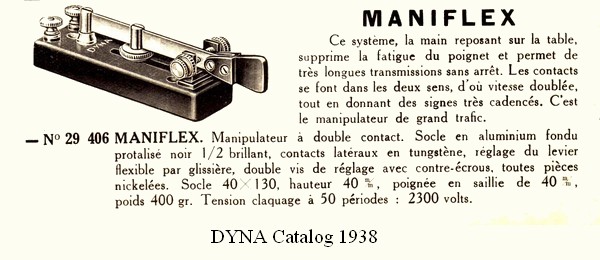 In France, from 1938 onwards, A. Chabot produced a double contact key under the brand name Dyna which he called the Maniflex. He also designed and produced various other pieces of equipment including spare parts, such as coils, capacitors, switches, frame antennas, indicator lights etc.
In France, from 1938 onwards, A. Chabot produced a double contact key under the brand name Dyna which he called the Maniflex. He also designed and produced various other pieces of equipment including spare parts, such as coils, capacitors, switches, frame antennas, indicator lights etc.
The firm Dyna-Chabot, the manufacturer of various Morse keys since the 1920's is an important part of French Radio history.
In the 1938 Dyna catalogue, four keys were offered for sale. One of these keys was the first double contact Maniflex.
The Maniflex double contact key, or so-called hacksaw blade key, works on the principle that the horizontal operation permits higher transmission speeds. Because the hand rests on the table it avoids wrist or arm fatigue.
The Maniflex is one of several French produced keys, all of which are considered to be ancestors of modern day keys. These days the keys are often used in conjunction with modern electronic keyers.
Although the key was banned from official telecommunication services, it has often been used unofficially by some operators.
In 1958 the Maniflex changed in appearance. The base was changed from aluminium to a black plastic material. The top mounted terminal posts were removed and the connections soldered underneath the key which allowed it to be used in conjunction with an electronic keyer. It was also offered with or without a suppressor. A three conductor cable and a plug was also an optional extra. The key remained on the market until the 1980's.
The last picture on the right shows the 1947, 1954 and 1958 Maniflex keys which are part of F9WT’s collection.
The Doublex by RADIO-LUNE.
Another French double contact key.
In 1954 the shop Radio-Lune, which was located near the Ecole Centrale de TSF (Central School of Telecommunications) rue de la Lune, or Moon Street, in Paris offered for sale the new design double contact keys.
Many of the old former students of the ECTSF will remember this small shop, adjoining the school, which sold radio spare parts and Morse keys.
Maurice Cohen, a former student of the school, founded the shop in February 1938. In the early 1950's he decided to sell the only commercially made French semi-automatic key that was ever produced, named the Vibro-Mors. He had the keys manufactured and subsequently sold them via his shop.
The Vibro-Mors used the same principles as the American Vibroplex keys used by the American forces.
At the time a lot of French radio operators thought about the Vibroplex and longed to own one.
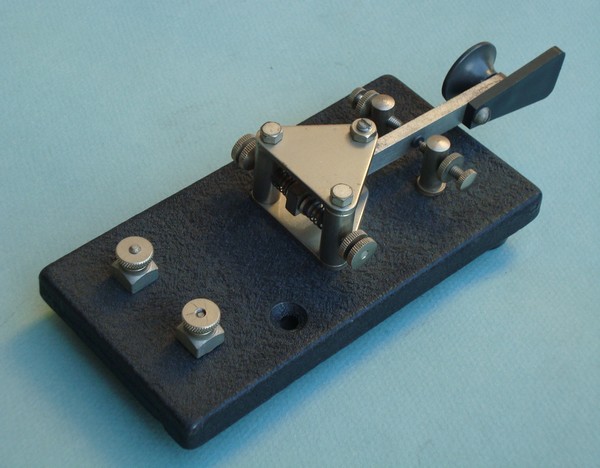 Cohen also started producing a double contact key called the Doublex which had a heavy, wrinkled black or chrome, base.
Cohen also started producing a double contact key called the Doublex which had a heavy, wrinkled black or chrome, base.
Probably part of a very limited production. This double contact key is very rare and hard to find nowadays.
Dyna and Radio-Lune seem to have been the only French manufacturers of double contact keys.
Numerous homebrew versions of this type of key have and still are, made by today’s radio amateurs. Some of these keys are constructed to a very high standard.
73
Christian CHEFNAY, F9WT.
